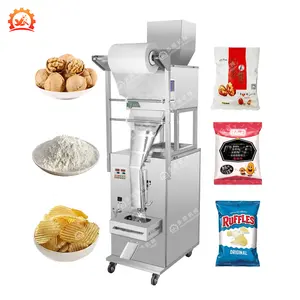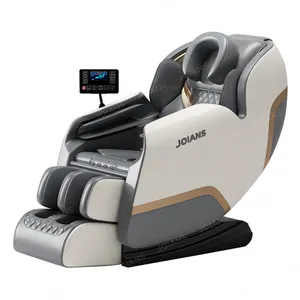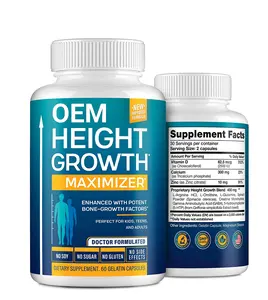Phổ biến trong ngành của bạn

DZD-420B tùy chỉnh 100-999g Nitơ tuôn ra Pop ngô khoai tây chiên phồng đồ ăn nhẹ máy đóng gói
1.620,00 US$ - 1.780,00 US$
Đơn hàng tối thiểu: 1 Bộ


Tự động căng phồng Snack Pouch máy đóng gói Khoai tây chiên giòn Ngô doypack máy đóng gói
14.366,00 US$ - 15.085,00 US$
Đơn hàng tối thiểu: 1 Bộ


Thép không gỉ chất lượng cao căng phồng thực phẩm ăn nhẹ đường gói tất cả trong một điền trọng lượng và máy đóng gói
9.500,00 US$
Đơn hàng tối thiểu: 1 Bộ


Tốc Độ Cao Premade Pouch Đóng Bao Máy Móc Khoai Tây Chiên Phồng Snack Túi Máy Đóng Gói
14.366,00 US$ - 15.085,00 US$
Đơn hàng tối thiểu: 1 Bộ


Hàn quốc popped gạo căng phồng bánh nhà sản xuất máy căng phồng đồ ăn nhẹ nhà sản xuất cho bán
Sẵn sàng vận chuyển
1.500,00 US$
Đơn hàng tối thiểu: 1 Bộ
Vận chuyển mỗi chiếc: 978,70 US$

Động cơ điện và động cơ diesel Ngô gạo Puff Snack Máy làm lúa mì ngô puffing thực phẩm máy đùn Maker
760,00 US$ - 780,00 US$
Đơn hàng tối thiểu: 1 Bộ

Cao Hiệu Quả Hoàn Toàn Tự Động Ngũ Cốc Kẹo Bar Quinoa Bánh Snack Ball Maker Puffed Gạo Snacks Làm Máy
15.000,00 US$
Đơn hàng tối thiểu: 1 Bộ

Tự Động Tùy Chỉnh Chất Lượng Tốt Bi-Màu Sắc Căng Phồng Snack Thực Phẩm Đùn Mini Snack Máy Dầu Miễn Phí Snack Nhà Sản Xuất
25.000,00 US$
Đơn hàng tối thiểu: 1 Bộ

Tự động hóa căng phồng gạo Ngô phồng đồ ăn nhẹ làm máy đùn Popper bỏng ngô Maker
598,00 US$
Đơn hàng tối thiểu: 1 Bộ
Vận chuyển mỗi chiếc: 1.982,00 US$

Ngô Đùn Căng Phồng Snack Máy Thực Phẩm Máy Đùn Thiết Bị Thiết Bị Chế Biến Nhà Sản Xuất
10.000,00 US$
Đơn hàng tối thiểu: 1 Bộ
Vận chuyển mỗi chiếc: 85,02 US$

Giấy Chứng nhận CE tự động công nghiệp ép đùn căng phồng Snack nhà sản xuất thực phẩm/ngô Puff máy làm/Puff Snack đùn
1.690,00 US$ - 2.590,00 US$
Đơn hàng tối thiểu: 1 Bộ
Vận chuyển mỗi chiếc: 5.000,00 US$
Các tìm kiếm liên quan:
máy hâm nóng đồ ăn nhẹphụ tùng máy ăn nhẹmáy làm snack quayđồ ăn nhẹnhà sản xuất đồ ăn nhẹgiá sản xuất đồ ăn nhẹmáy ăn nhẹ hình trònnhà sản xuất đồ ăn nhẹ 4 1nhà sản xuất đồ ăn nhẹ ấn độmáy làm đồ ăn nhẹ minidụng cụ làm đồ ăn nhẹ có thể tháo rờimáy ăn nhẹ quảng châuđại bàng máy ăn nhẹmáy ăn nhẹ rowenhà sản xuất snack lúa mì phồng

Ngô Snack máy đùn Ngô Puff Snack máy đùn puffing động vật thực phẩm PELLET Maker
14.000,00 US$ - 17.501,00 US$
Đơn hàng tối thiểu: 1 Bộ
Vận chuyển mỗi chiếc: 7.450,00 US$

Zimbabwe căng phồng gạo Ngô bóng đồ ăn nhẹ làm cho máy Popper bỏng ngô Maker
2.550,00 US$ - 2.950,00 US$
Đơn hàng tối thiểu: 1 Bộ

Snack thực phẩm đùn puffing máy tự động căng phồng thực phẩm Maker 75 căng phồng đồ ăn nhẹ dây chuyền sản xuất
18.000,00 US$ - 20.000,00 US$
Đơn hàng tối thiểu: 1 Bộ
Vận chuyển mỗi chiếc: 56,72 US$

Ngô Puff Stick Máy căng phồng Ngô Hollow Rod Snack Maker
1.300,00 US$ - 1.600,00 US$
Đơn hàng tối thiểu: 1 Bộ
Vận chuyển mỗi chiếc: 440,10 US$

Quy mô nhỏ pho mát bóng Snack căng phồng đùn sắn Puff thực phẩm Maker
890,00 US$ - 1.290,00 US$
Đơn hàng tối thiểu: 1 Bộ
Vận chuyển mỗi chiếc: 532,34 US$

Thiết Bị Quả Mọng Lúa Mì Máy Làm Đồ Ăn Nhẹ Bắp Lớn Máy Làm Bỏng Ngô Thực Phẩm Luồng Khí
2.450,00 US$
Đơn hàng tối thiểu: 1 Bộ
Vận chuyển mỗi chiếc: 1.046,00 US$

Năng suất cao Mini Ngô máy đùn Thép Mới dựa trên ngô và gạo puffing Snack thực phẩm Maker căng phồng Ngô đồ ăn nhẹ Maker
258,00 US$ - 278,00 US$
Đơn hàng tối thiểu: 1 Bộ

Căng Phồng Ngô Gậy Đồ Ăn Nhẹ Sản Xuất Máy Đùn Dòng Tự Động Phun Thanh Snack Thực Phẩm Làm Máy Sản Xuất
9.500,00 US$ - 10.000,00 US$
Đơn hàng tối thiểu: 1 Bộ
Vận chuyển mỗi chiếc: 5.000,00 US$

Máy đùn Ngô căng phồng/máy ăn nhẹ căng phồng/máy gạo căng phồng Popper nhà sản xuất bỏng ngô
3.910,00 US$ - 6.709,00 US$
Đơn hàng tối thiểu: 1 Bộ

Công Nghiệp Tự Động Ngô Pho Mát Puffed Snacks Maker Pops Snacks Ngũ Cốc Thực Phẩm Puffing Và Máy Đùn
2.000,00 US$
Đơn hàng tối thiểu: 1 Bộ

Tự động Ngô Puff chip sản xuất làm cho máy dòng đôi vít căng phồng đồ ăn nhẹ chế biến máy đùn nhà sản xuất
18.000,00 US$ - 18.500,00 US$
Đơn hàng tối thiểu: 1 Bộ
Vận chuyển mỗi chiếc: 5.000,00 US$

Thuận tiện hơn và dễ dàng hoạt động tự động Tam giác sắc nét Phùng ra đồ ăn nhẹ chế biến thực phẩm dòng máy Maker
10.000,00 US$ - 50.000,00 US$
Đơn hàng tối thiểu: 1 Bộ

Cao Hiệu Quả Hoàn Toàn Tự Động Ngũ Cốc Kẹo Bar Quinoa Bánh Snack Ball Maker Puffed Gạo Snacks Làm Máy
1.500,00 US$ - 3.500,00 US$
Đơn hàng tối thiểu: 1 Bộ

Động cơ điện và động cơ diesel Ngô gạo Puff Snack Máy làm lúa mì ngô puffing thực phẩm máy đùn Maker
1.380,00 US$ - 1.430,00 US$
Đơn hàng tối thiểu: 5 Bộ

Năng suất cao Mini Ngô máy đùn Thép Mới dựa trên ngô và gạo puffing Snack thực phẩm Maker căng phồng Ngô đồ ăn nhẹ Maker
320,00 US$ - 450,00 US$
Đơn hàng tối thiểu: 1 Bộ

Chất Lượng Cao Ngô Pho Mát Bóng Đồ Ăn Nhẹ Máy Tự Động Phồng Ngũ Cốc Đồ Ăn Nhẹ Hương Liệu Thực Phẩm Máy Pho Mát Phun Đồ Ăn Nhẹ Nhà Sản Xuất
1.860,00 US$
Đơn hàng tối thiểu: 1 Bộ
Vận chuyển mỗi chiếc: 700,00 US$

Động cơ điện và động cơ diesel Ngô gạo Puff Snack Máy làm lúa mì ngô puffing thực phẩm máy đùn Maker
90,00 US$ - 120,00 US$
Đơn hàng tối thiểu: 1 Cái
Vận chuyển mỗi chiếc: 109,22 US$

Đồ Ăn Nhẹ Máy Phun Ngô Sản Xuất Bóng 20 Kg/giờ Gạo Giòn Ngô Puffing Snack Thực Phẩm Căng Phồng Máy
450,00 US$ - 550,00 US$
Đơn hàng tối thiểu: 1 Bộ

Thép không gỉ Ngô Puff máy làm snack thực phẩm đùn gạo máy đùn Ngô căng phồng Maker
1.246,73 US$ - 1.667,73 US$
Đơn hàng tối thiểu: 1 Bộ
Vận chuyển mỗi chiếc: 572,02 US$

Thức ăn puffing máy thực phẩm ăn nhẹ máy đùn gạo căng phồng Máy Popper nhà sản xuất bỏng ngô
2.100,00 US$ - 2.150,00 US$
Đơn hàng tối thiểu: 1 Bộ
Vận chuyển mỗi chiếc: 7.350,00 US$

Tự động loại ngô căng phồng Snack Maker cho 3-lỗ Twist
80,00 US$ - 120,00 US$
Đơn hàng tối thiểu: 1 Bộ

Low Calorie Well-Being Snack Making Machine/Bánh Gạo Puffing Máy/Gạo Crackers Maker
1.350,00 US$
Đơn hàng tối thiểu: 1 Bộ


Low Calorie Well-Being Snack Making Machine/Bánh Gạo Puffing Máy/Gạo Crackers Maker
2.000,00 US$ - 3.000,00 US$
Đơn hàng tối thiểu: 1 Bộ

Mexico Máy Làm Đồ Ăn Nhẹ Ngô Phồng Máy Làm Gậy Gạo Mới Máy Ép Đùn Thực Phẩm Đồ Ăn Nhẹ Máy Làm Phồng Ngô Gạo Nhỏ
90,00 US$ - 120,00 US$
Đơn hàng tối thiểu: 1 Bộ

Chất Lượng Cao Căng Phồng Snack Thực Phẩm Sản Xuất Ngô Phun Máy Làm Thực Phẩm Ăn Nhẹ Thiết Bị Pho Mát Phun Đồ Ăn Nhẹ Làm Cho Máy Móc
20.000,00 US$
Đơn hàng tối thiểu: 1 Bộ

Jinan Halo tự động popped gạo Cracker làm cho máy hàn quốc Bánh gạo Maker các nhà sản xuất thúc đẩy gạo bánh máy
5.800,00 US$
Đơn hàng tối thiểu: 1 Bộ

Đồ ăn nhẹ quay gạo căng phồng làm bánh Máy Vòng gạo bóng Maker căng phồng ngũ cốc bánh hình thành máy
4.850,00 US$ - 5.800,00 US$
Đơn hàng tối thiểu: 1 Bộ
Các danh mục hàng đầu
Giới thiệu về nhà sản xuất đồ ăn nhẹ căng phồng
Ngày nay, nhà sản xuất đồ ăn nhẹ căng phồng không còn là điều mới mẻ đối với những người bình thường và không còn bị coi là điều cấm kỵ khi sử dụng. Nếu bạn đang tìm kiếm niềm vui áp chót đó, bạn phải kiểm tra sự bao la. Bộ sưu tập nhà sản xuất đồ ăn nhẹ căng phồng tại Alibaba.com. Những gợi cảm và cong. nhà sản xuất đồ ăn nhẹ căng phồng đáng giá từng xu và chắc chắn làm cho đêm đó trở nên đặc biệt đối với bạn. Những con búp bê này có ngoại hình giống như thật, bắt đầu từ tóc đến ngón chân theo mọi nghĩa.
Cho dù bạn là một người cô đơn đang tìm kiếm một người bạn đời như cuộc sống hay một cặp vợ chồng muốn thêm gia vị cho cuộc sống của họ, bạn đều có thể sử dụng chúng . nhà sản xuất đồ ăn nhẹ căng phồng để đốt cháy ngọn lửa đó. Những ngoạn mục. nhà sản xuất đồ ăn nhẹ căng phồng có thể tùy chỉnh theo mong đợi của bạn. Những điều tuyệt vời. nhà sản xuất đồ ăn nhẹ căng phồng có sẵn ở cả phiên bản dành cho nam và nữ và được làm từ silicone cấp y tế để sử dụng an toàn. Hãy sở hữu ngay bây giờ và tận hưởng một đêm đam mê và cháy bỏng.
Alibaba.com cung cấp những điều tuyệt vời này. nhà sản xuất đồ ăn nhẹ căng phồng ở mọi hình dạng cơ thể, kích thước và sắc tộc. Dù yêu cầu của bạn đối với. nhà sản xuất đồ ăn nhẹ căng phồng, bạn có thể tải tất cả chúng trên trang web. Những cái này. nhà sản xuất đồ ăn nhẹ căng phồng được tạo hình bởi những người thợ thủ công giỏi nhất và mọi chi tiết phức tạp đều được kiểm tra kỹ lưỡng. Những con búp bê này có mắt, tóc, móng tay và tất cả các bộ phận cơ thể khác tương tự như người thật.
Alibaba.com cung cấp nhiều loại. nhà sản xuất đồ ăn nhẹ căng phồng có thể giúp bạn mua các sản phẩm phù hợp với ngân sách và các yêu cầu khác của bạn. Các sản phẩm này an toàn để sử dụng, được chứng nhận và thân thiện với môi trường trong tự nhiên. Đơn đặt hàng OEM có sẵn trên các sản phẩm này.
Cho dù bạn là một người cô đơn đang tìm kiếm một người bạn đời như cuộc sống hay một cặp vợ chồng muốn thêm gia vị cho cuộc sống của họ, bạn đều có thể sử dụng chúng . nhà sản xuất đồ ăn nhẹ căng phồng để đốt cháy ngọn lửa đó. Những ngoạn mục. nhà sản xuất đồ ăn nhẹ căng phồng có thể tùy chỉnh theo mong đợi của bạn. Những điều tuyệt vời. nhà sản xuất đồ ăn nhẹ căng phồng có sẵn ở cả phiên bản dành cho nam và nữ và được làm từ silicone cấp y tế để sử dụng an toàn. Hãy sở hữu ngay bây giờ và tận hưởng một đêm đam mê và cháy bỏng.
Alibaba.com cung cấp những điều tuyệt vời này. nhà sản xuất đồ ăn nhẹ căng phồng ở mọi hình dạng cơ thể, kích thước và sắc tộc. Dù yêu cầu của bạn đối với. nhà sản xuất đồ ăn nhẹ căng phồng, bạn có thể tải tất cả chúng trên trang web. Những cái này. nhà sản xuất đồ ăn nhẹ căng phồng được tạo hình bởi những người thợ thủ công giỏi nhất và mọi chi tiết phức tạp đều được kiểm tra kỹ lưỡng. Những con búp bê này có mắt, tóc, móng tay và tất cả các bộ phận cơ thể khác tương tự như người thật.
Alibaba.com cung cấp nhiều loại. nhà sản xuất đồ ăn nhẹ căng phồng có thể giúp bạn mua các sản phẩm phù hợp với ngân sách và các yêu cầu khác của bạn. Các sản phẩm này an toàn để sử dụng, được chứng nhận và thân thiện với môi trường trong tự nhiên. Đơn đặt hàng OEM có sẵn trên các sản phẩm này.












